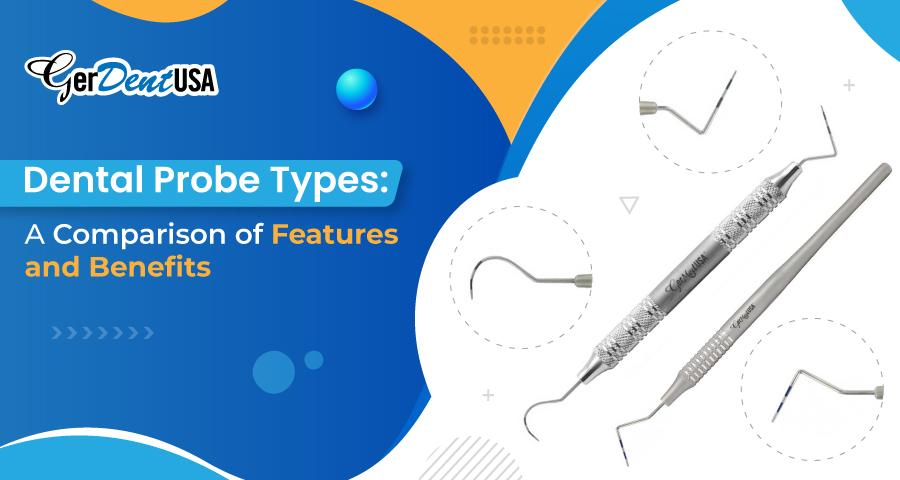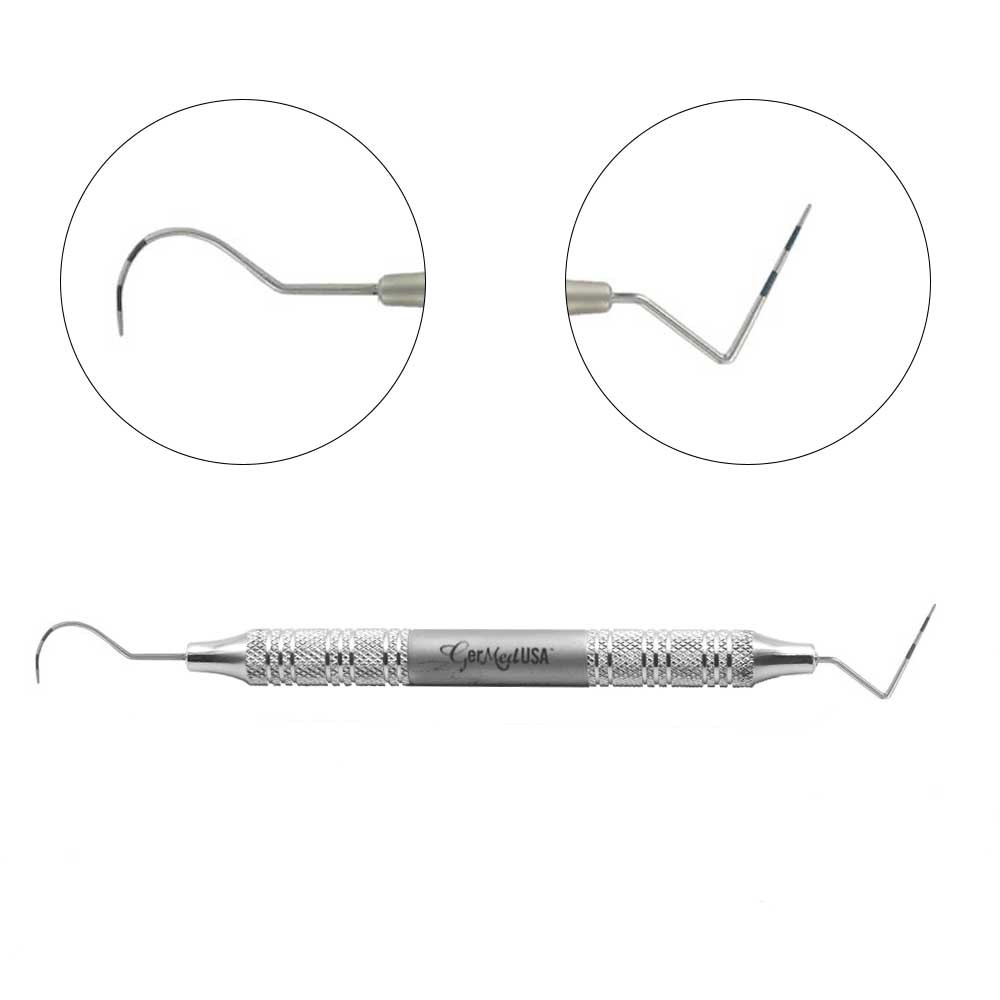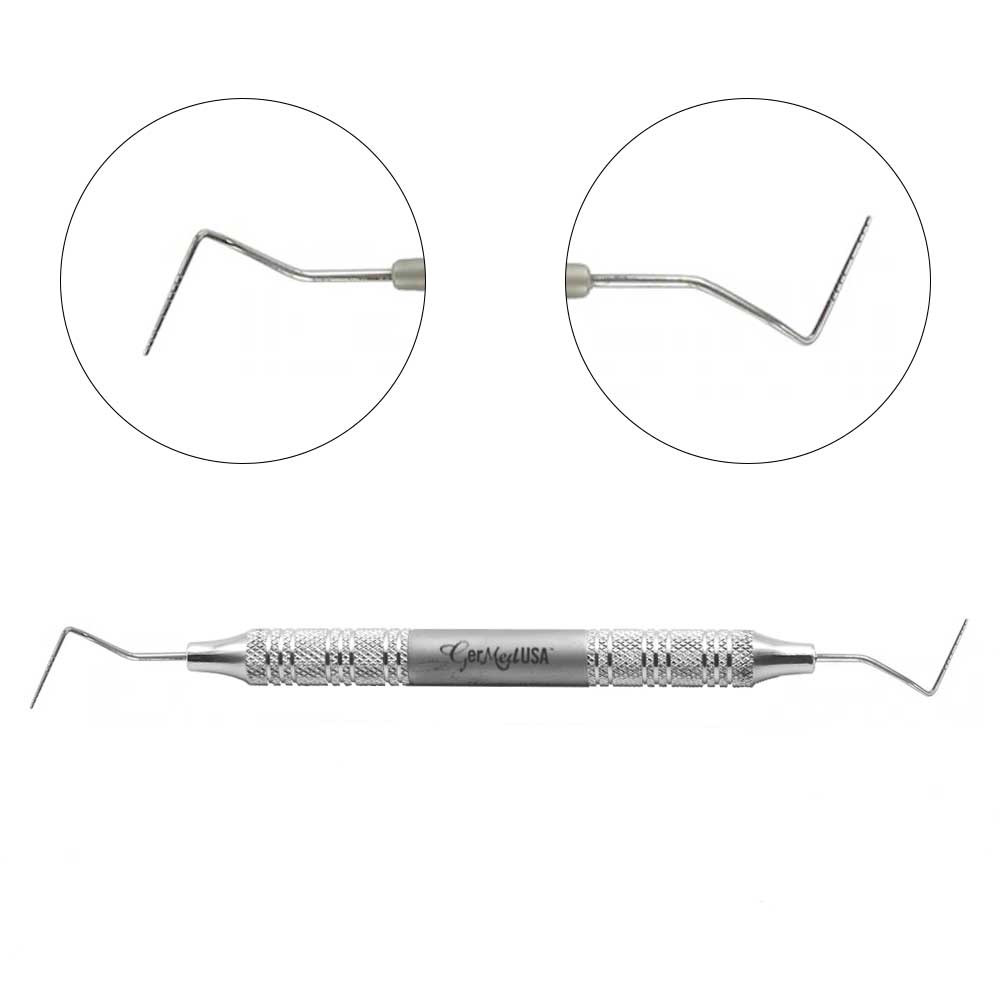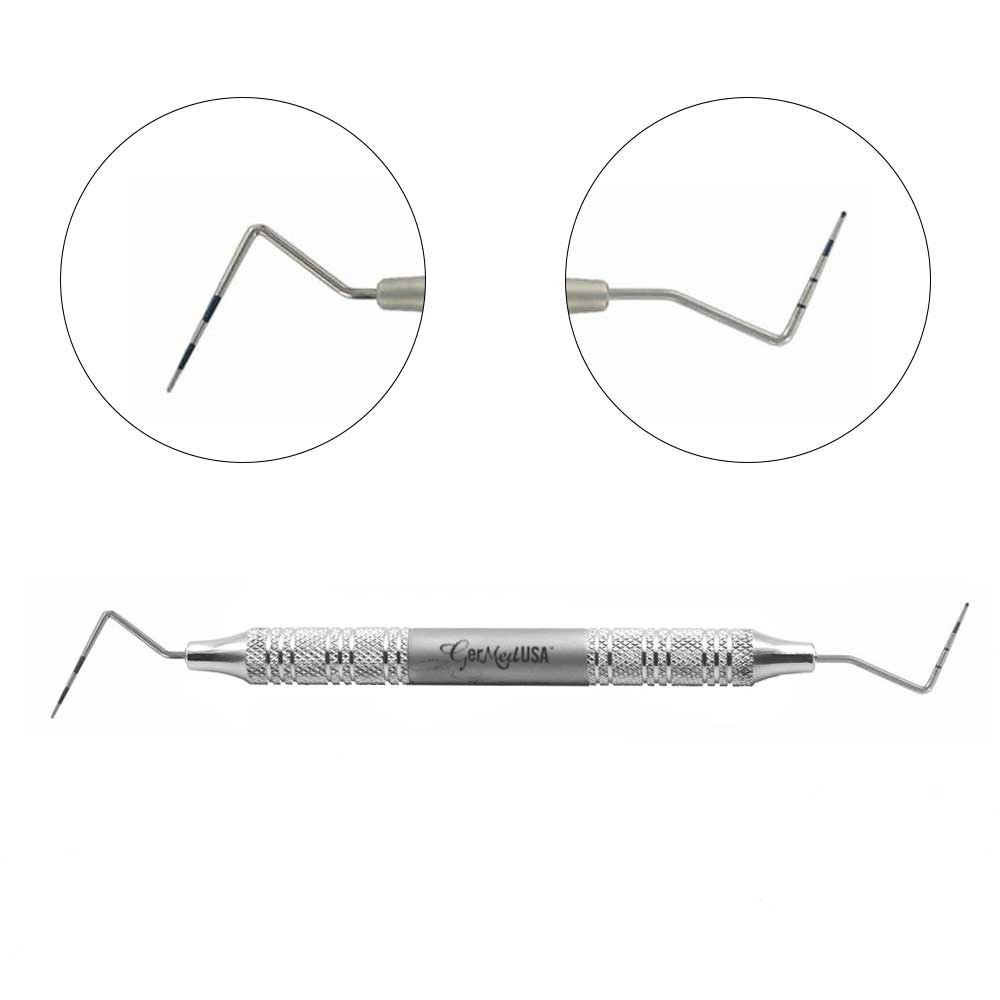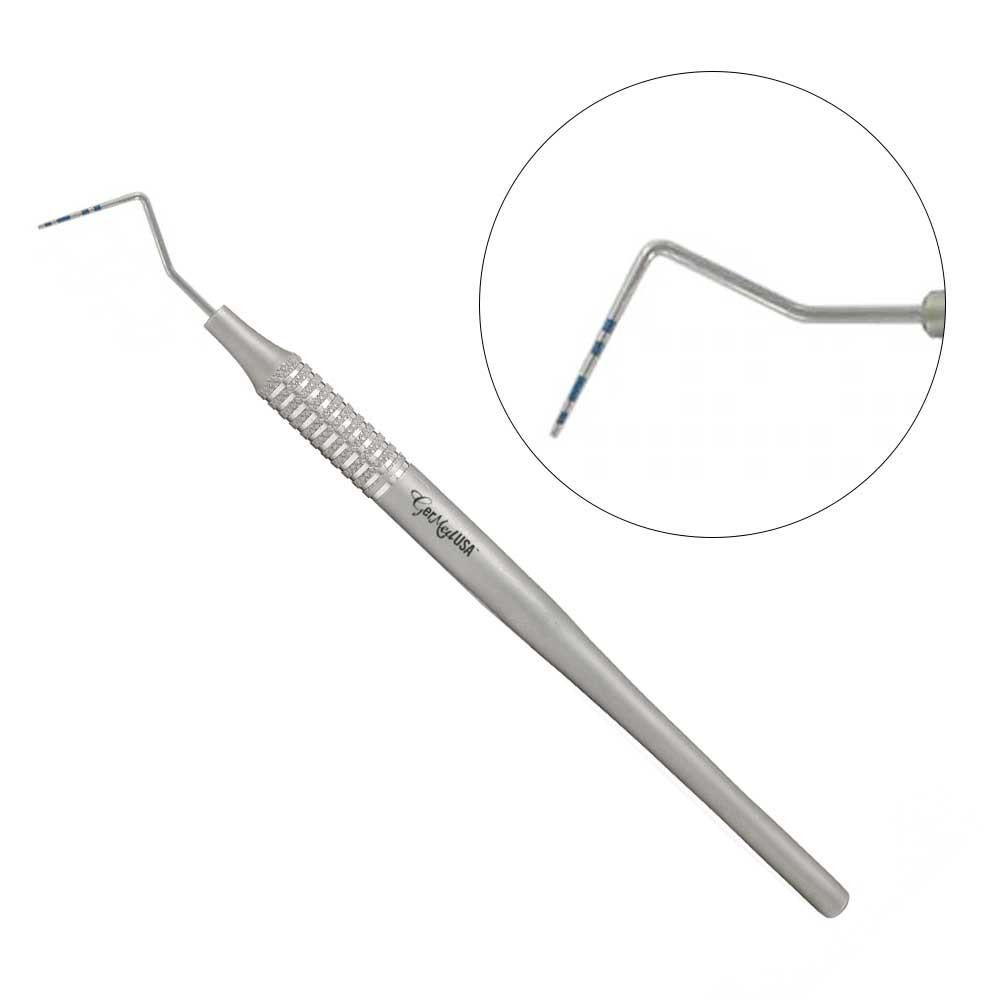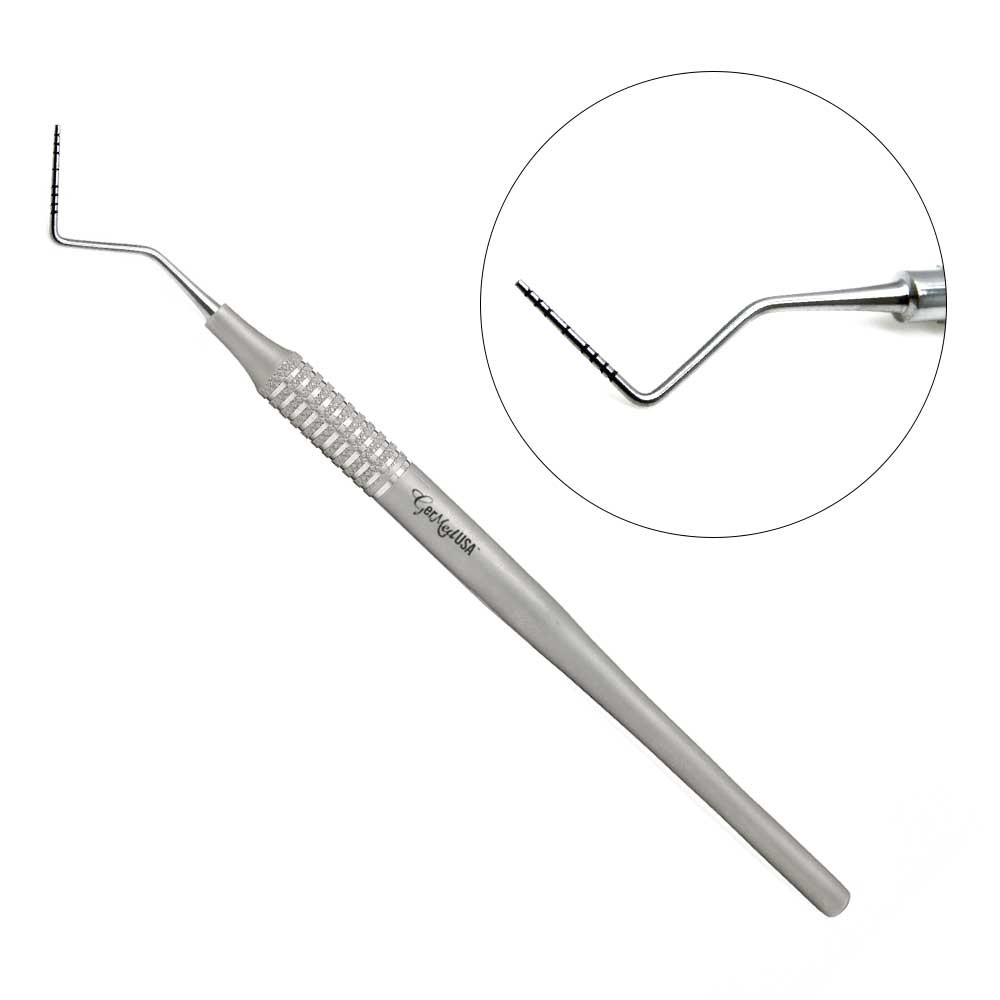During appointments, dentists require a variety of specialized instruments to identify and treat tooth complications. A dental probe is one such essential dentistry instrument needed for identifying gum disease.
Additionally, the different dental probe types are critical for effective treatment in different cases.
There are various types of periodontal probes available, each with unique features and specific applications.
So, how do you know which dental probe suits your needs? Here, we will discuss important dental probes, their available types, and key characteristics.
Why Are Dental Probes Important?
Dental probes, commonly called periodontal probes, are slender, handheld instruments specifically designed to:
Assess the periodontal pockets' depth:
These pockets are the crevices between the gums and the teeth. The usual size of healthy pockets is 1-3 millimeters. A deeper pocket may be a sign of periodontal disease (periodontitis) or gingivitis, an infection of the gums.
Identify gum bleeding:
Even mild probing may cause bleeding, indicating gum disease or inflammation.
Examine the condition of the gum tissue:
Dentists can identify possible problems by gently probing various gum locations to find variations in the hardness and anatomy of the gums.
Identify root surface irregularities:
Dental probe types can detect numerous anomalies in tooth roots that lead to plaque development and gum disease.
Apart from that, dental probes play a crucial role in:
- Early detection and diagnosis of gum disease
- Monitoring gum health over time
- Planning and evaluating gum disease treatment
Different Dental Probe Types and Their Features
Although the primary function of measuring pocket depth remains the same, dental probes come in various designs, each used for particular needs and dentist preferences.
Here's a breakdown of different periodontal probe types:
Probe Color Coded UT3/4 (3-6-9-12mm)
This is one of the most used dental probe types with double-ended and curved pointed ends; it comes in multiple variations (3mm, 6mm, 9mm, and 12mm). Probe Color Coded UT3/4 checks the periodontal pocket depth vertically or horizontally. The color markings help determine the depth accurately.
Probe Color Coded UT3/4 helps detect plaque and calculus buildup on the tooth surface. Additionally, it can also help assess gum bleeding and evaluate tooth mobility.
These dental probes have the following features:
- Premium Grade
- Multiple sizes
- Color-coded
- Curved Pointed ends
- Double-ended
Check out our German stainless Probe Color-Coded UT3/4 (3-6-9-12mm), add it to your cart, and improve your efficiency while diagnosing periodontal complications.
Probe CPWD (1-2-3-5-7-8-9-10mm)
The Probe CPWD helps assess the periodontal pocket depth horizontally or vertically. This probe dental instrument is notable for its multiple markings (1-2-3-5-7-8-9-10mm), which allow the dentist to determine the measured pocket's depth accurately.
These dental instruments have the following features:
- Sizes Available (1-10mm)
- Curved ends
- Color-coded markings
- Ergonomic Pattern
- German Forged
Explore and order now to improve your periodontal kit.
Probe Color Coded CP12/CP11.5B (3-6-9-12/3.5-5.5-8.5-11.5mm)
Probe Color Coded CP12/CP11.5B (3-6-9-12/3.5-5.5-8.5-11.5mm) measures the periodontal pocket’s depth. It has two ends, each with color-coded marks at different levels (3-6-9-12 and 3.5-5.5-8.5-11.5 mm) to make it easy to read and find. This instrument helps dentists check the health of gums, see how the disease is getting worse, and determine the effectiveness of treatment.
Some features are listed here:
- Tip Sizes 3-6-9-12/3.5-5.5-8.5-11.5mm
- Pointed sharp ends
- Double-ended Probe
- Ergonomic Design
- Slender handle
- Multiple Sizes
Explore our catalog and choose what you need. We offer custom instrument manufacturing services in case you need a specific instrument for the unique procedures and hand to use.
Probe Color Coded CP10 (1-2-3-5-7-8-9-10mm)
The Probe Color Coded CP10 (1-2-3-5-7-8-9-10mm) is a single-ended dental instrument that measures periodontal pocket depths. The CP10 probe has permanent markings in millimeters along its single tip, which makes it easy and accurate for dentists to find pocket depths during examinations.
Probe Color Coded CP10 (1-2-3-5-7-8-9-10mm) is available in different variations. We also offer custom manufacturing instruments in cases where dentists require a specific tool.
These instruments have the following features:
- Tip Sizes 1-2-3-5-7-8-9-10mm
- Ergonomic design
- Slender handle
- Pointed sharp ends
- German forged
- Single handle
Order now and enhance your dental kit’s efficiency.
Color Coded Probe CPW, (1-2-3-5-7-8-9-10mm)
The Color Coded Probe CPW (1-2-3-5-7-8-9-10mm) is designed to help dentists determine how deep periodontal pockets are. It has a sharp working end in the shape of a V that is calibrated. It allows dentists to examine the attachment level of the periodontal ligament correctly.
Our Color-Coded Probe CPW is calibrated in mm as 1-2-3-5-7-8-9-10mm. This ensures that the assessment is correct. The instrument has been designed to be comfortable and can measure the depth of periodontal pockets horizontally and vertically.
Additionally, it is:
- German stainless steel made
- Color-coded
- Precision-crafted
- Reusable
Buy our German stainless Color Coded Probe CPW (1-2-3-5-7-8-9-10mm), making your periodontal procedures more efficient.
Proper Maintenance of Different Dental Probe Types
Dental probes, especially periodontal probes, require special maintenance to guarantee their accuracy, durability, and hygienic conditions. The following are general guidelines for caring for several kinds of probe dental instruments:
Cleaning:
Make sure the probe is completely clean to get rid of any blood, debris, or other impurities after every usage. Scrub the probe gently with a soft brush (such as a toothbrush meant for this purpose) and a mild detergent or disinfectant solution.
Sterilization:
Periodontal probes should be sterilized after each use to prevent the transmission of infections between patients. Follow the manufacturer's instructions for sterilization methods, including autoclaving, chemical sterilization, or heat sterilization.
Storage:
Store the dental probes in a clean, dry environment to prevent contamination. Organize and protect the probes from damage using designated containers or pouches.
Inspection:
Regularly inspect the probes for any signs of damage, such as bent tips or corrosion. If any damage is detected, replace the probe immediately to maintain accuracy and prevent patient injury.
Calibration:
Periodically check the calibration of the probe to ensure its accuracy. Follow the manufacturer's calibration guidelines or consult a qualified professional if you need adjustments.
To Wrap Up!
Dental probes play a crucial role in diagnosing and treating oral health issues. By understanding the features and benefits of different dental probe types in dentistry, dental professionals can make informed decisions to meet each procedure’s unique needs.
We manufacture high-quality dentistry instruments that help dental professionals work better in practice.
All our dentistry instruments are safe and reliable, and our goods meet FDA compliance and quality standards. GerDentUSA also offers customized instruments. If an instrument is unavailable on our site, we can manufacture it based on your specific requirements.
FAQs
What are dental probes used for?
Dental probes, or periodontal probes, are crucial instruments, dentists use to measure gum pocket depth and examine gum tissue health. They also help identify gum bleeding and inflammation and detect root surface irregularities. These are some basic dental probe uses that have been discussed.
What are the different types of dental probes?
Various dental probe types are available in the market, each with specific features. Some common ones include probes with color-coded markings for different sizes, single—or double-ended probes, and probes with pointed or V-shaped tips. These features cater to different dentist preferences and specific examination needs.
What are some key features of a good dental probe?
Good dental probes should be available in multiple size options and have color coding for easy identification. They should also be ergonomically designed for comfort, have sharp ends for precise examination, and be made of high-quality materials like German forged steel.

